Best child bike seats 2025: tested and rated by parents
Find your perfect toddler or baby bike seat for cycling; we explain the options, their pros and cons and how they mount
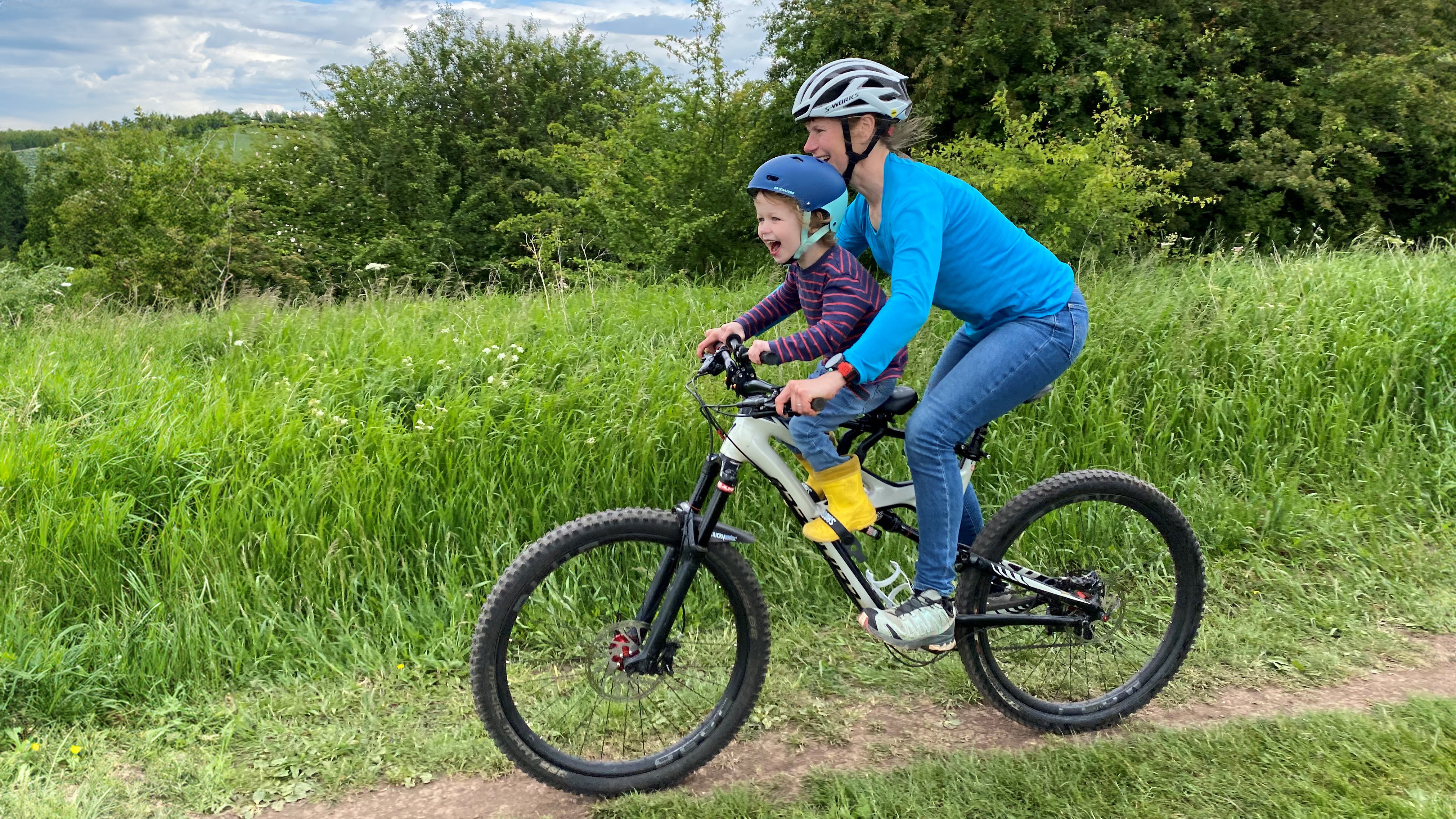
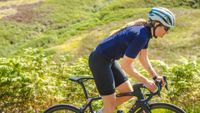
Owning one of the best child bike seats is a great way to introduce kids to a lifelong love of cycling and get them outside.
With a child seat on your bike, they can experience the thrill of zooming around on two wheels before starting their own cycling journey on one of the best balance bikes and eventually pedalling one of the best kids' bikes of their own.
There are two main styles of child bike seats: those mounted on the front and those on the rear. Rear seats then fall into two further categories: frame-mounted or rack-mounted. Which style you can fit depends on your bike's compatibility and what's best for your little one. Check out our how-to choose section at the bottom of this guide.
Here at Cycling Weekly, we have several parents with kids in the ideal size and age range for which these seats are suitable. Of the seats tested, six made the cut, with a mix of both front and rear options. All the seats in this guide deserve mention, but our top honour for best overall goes to the Topeak Babyseat II despite a close fight with BoBike Go. I can't not mention the seats from Ride Shotgun, who are changing the way we ride with our kids and opening up new and exciting adventures, with two of their seats making this guide.
If you're carrying more than one child or want to take extra luggage, it may be worth considering purchasing one of the best child bike trailers or the best cargo bikes.
The Quick List
Rear seats
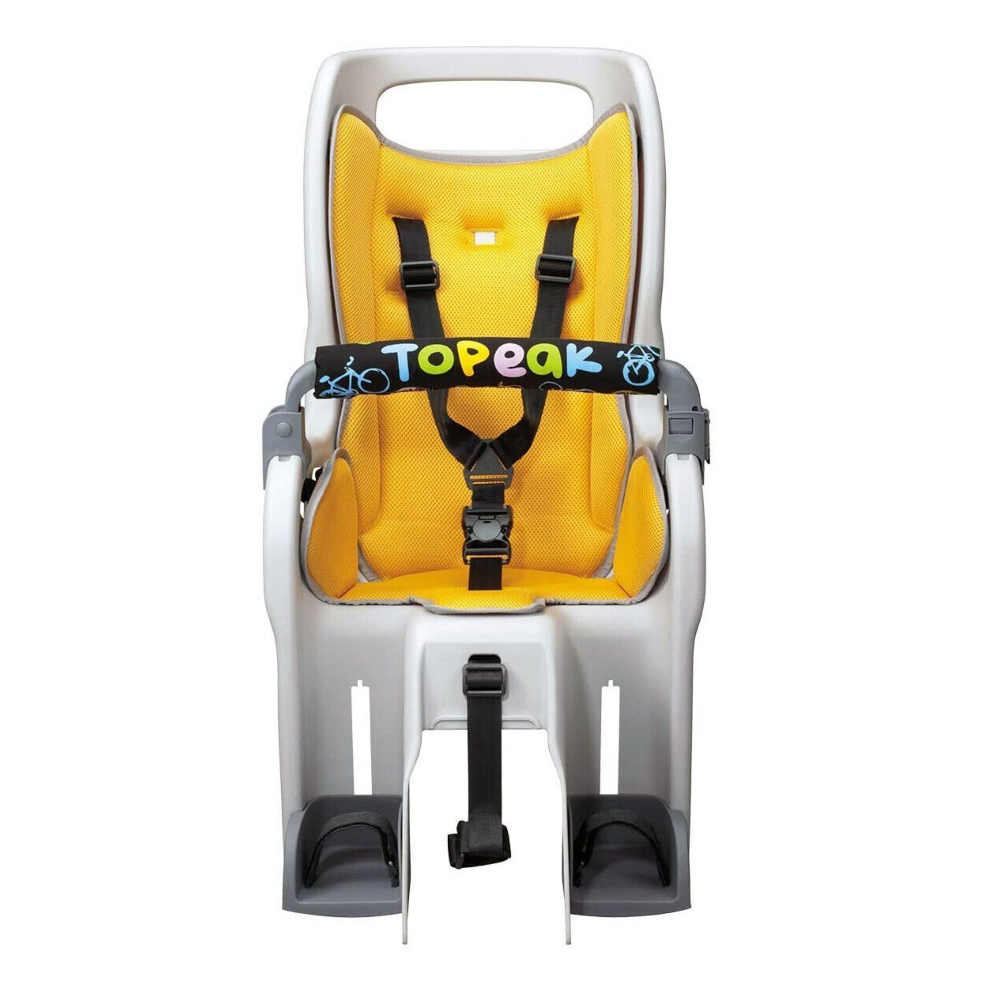
Straightforward to fit with tons of security and comfort thanks to the wraparound design, rack mounting and suspension design.
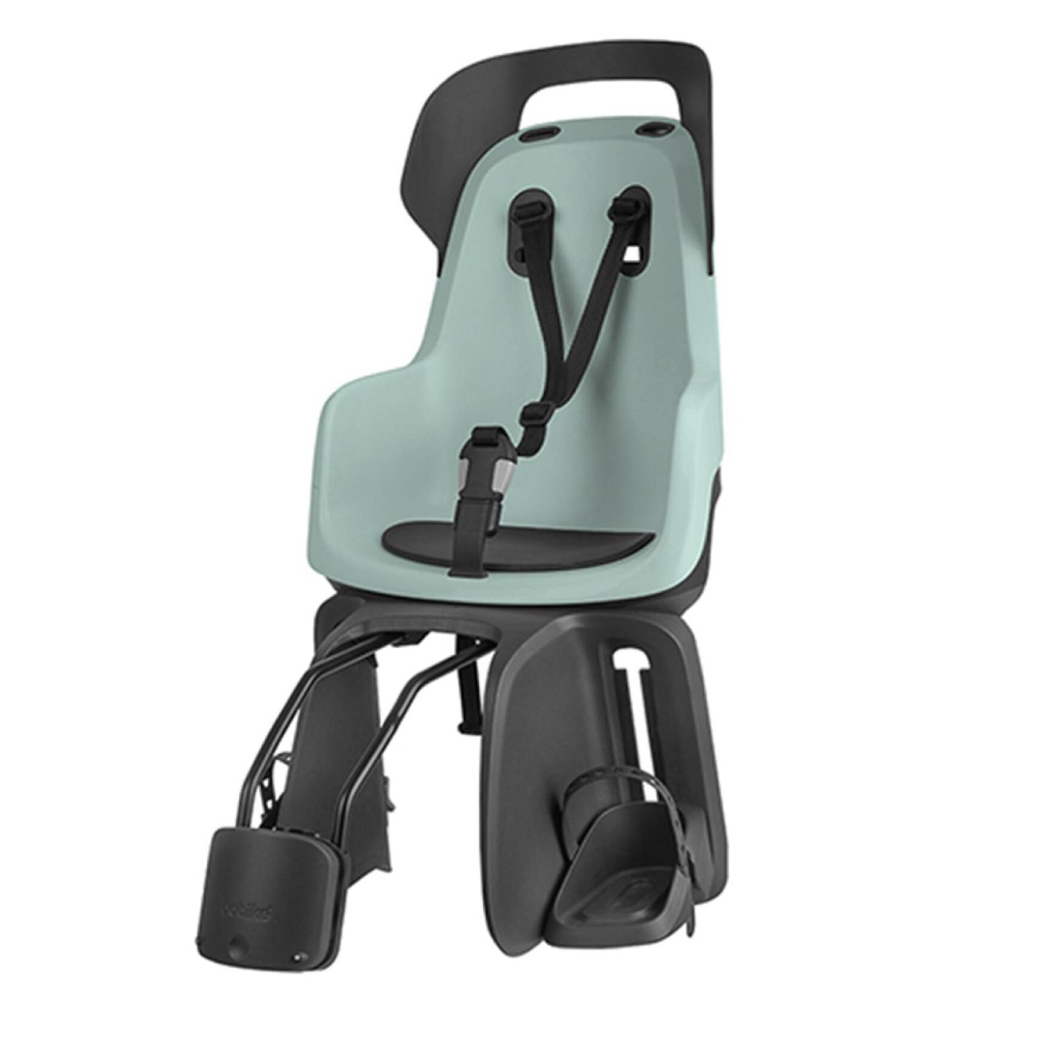
Competitively priced and well-made, it's a sturdy, smart and well-functioning rear seat. Lacks hi-vis features.

With adjustable recline, in-built suspension and easy-to-use straps, it blends comfort with functionality.
Front seats
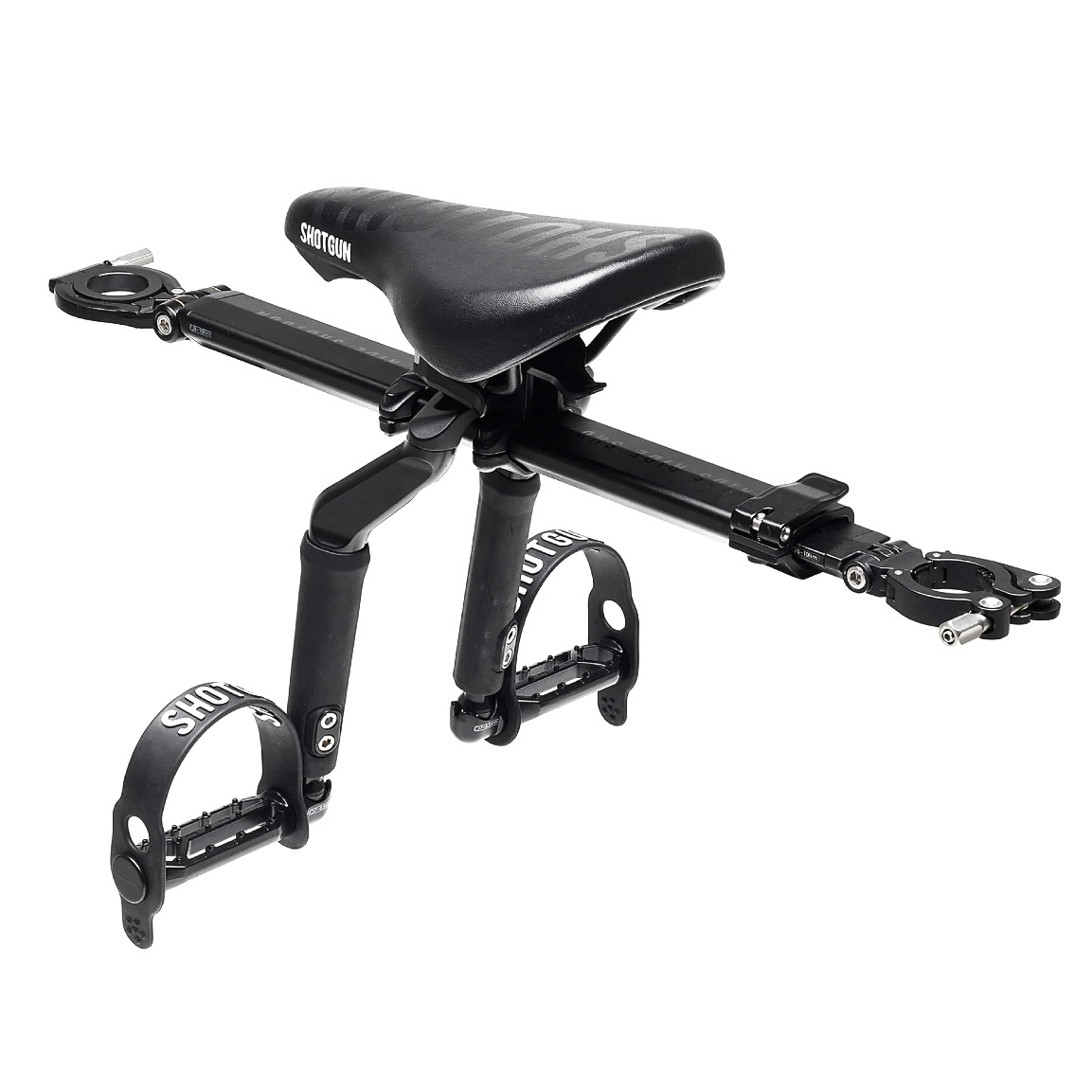
Fully adjustable and requiring no frame mounting, the Ride Shotgun Pro is one of the most flexible options on the market.
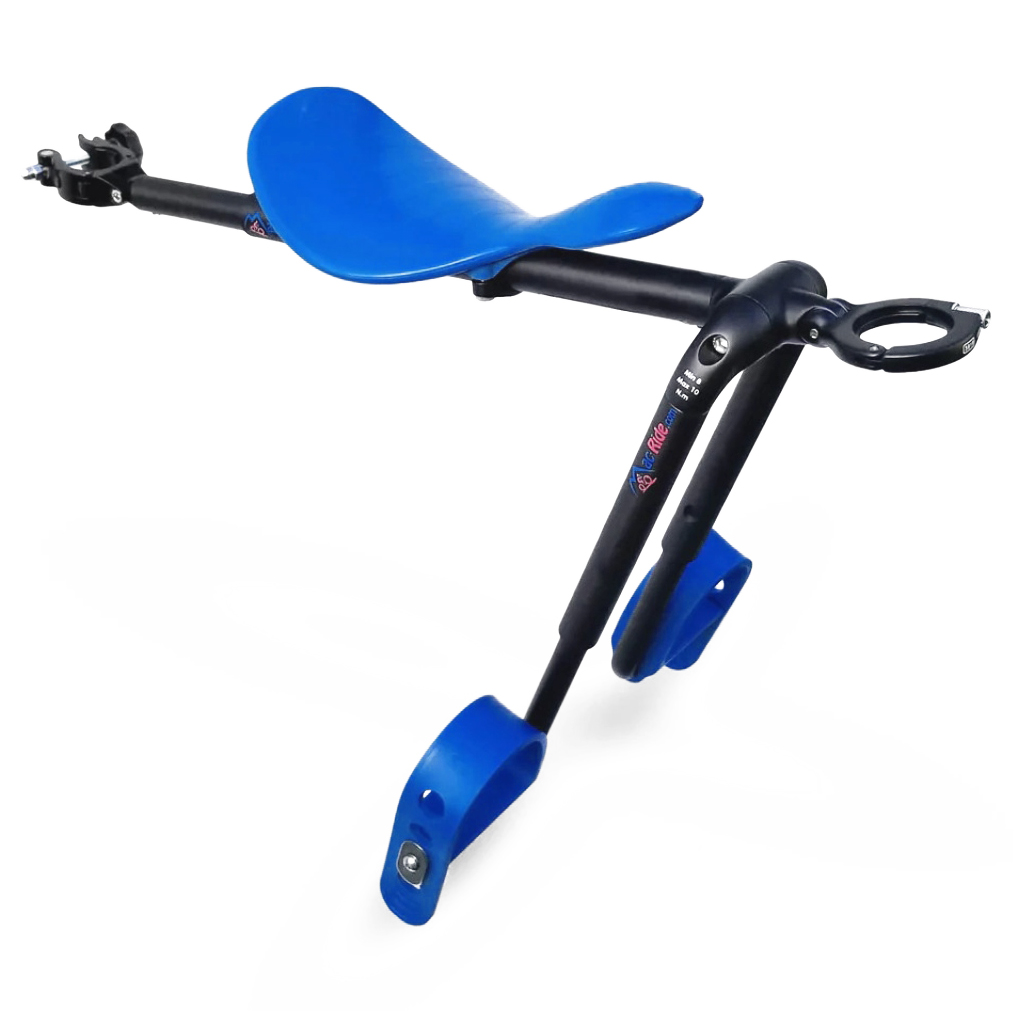
Lightweight and with little impact on the bike's balance, it's ideally suited to technical terrain and hills.
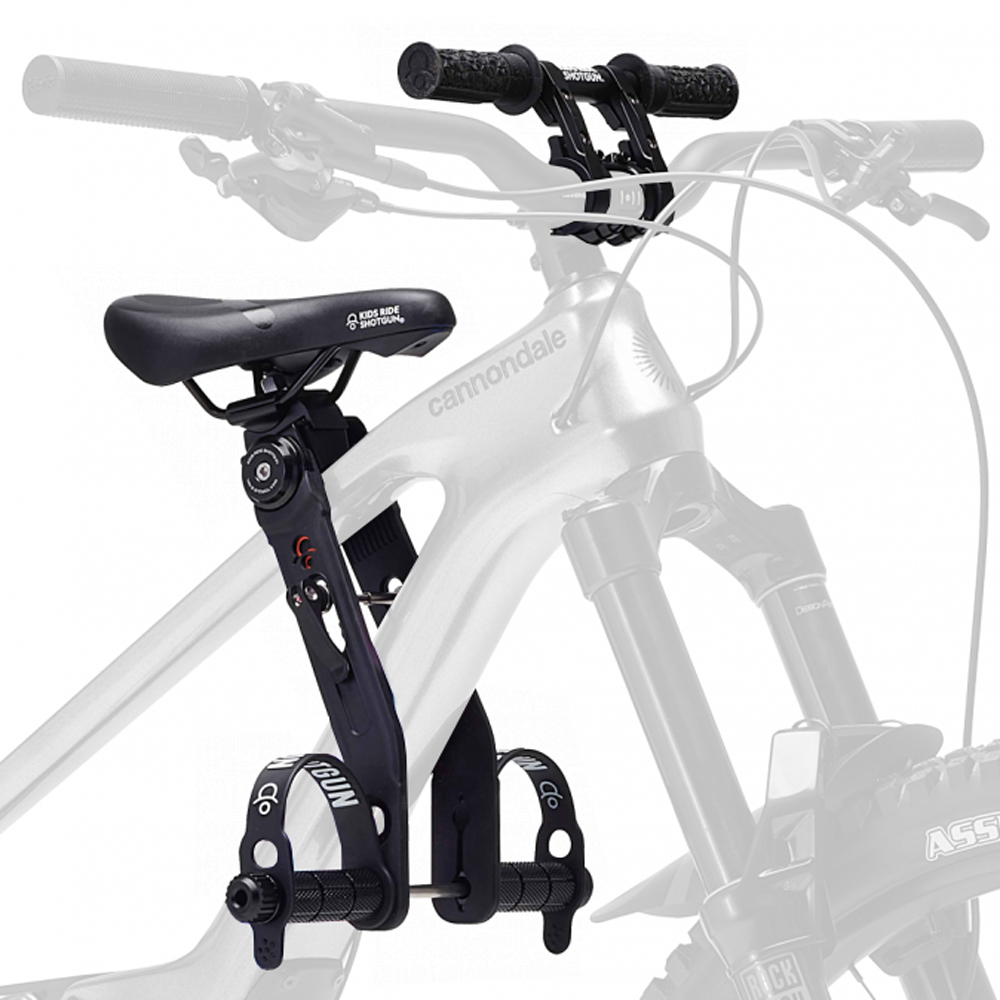
While it offers less compatibility and adjustability compared to the Pro model, the Ride Shotgun 2.0 offers a comparable ride experience for a significantly lower price.
The best child bike seats - rear mounted
Best Overall
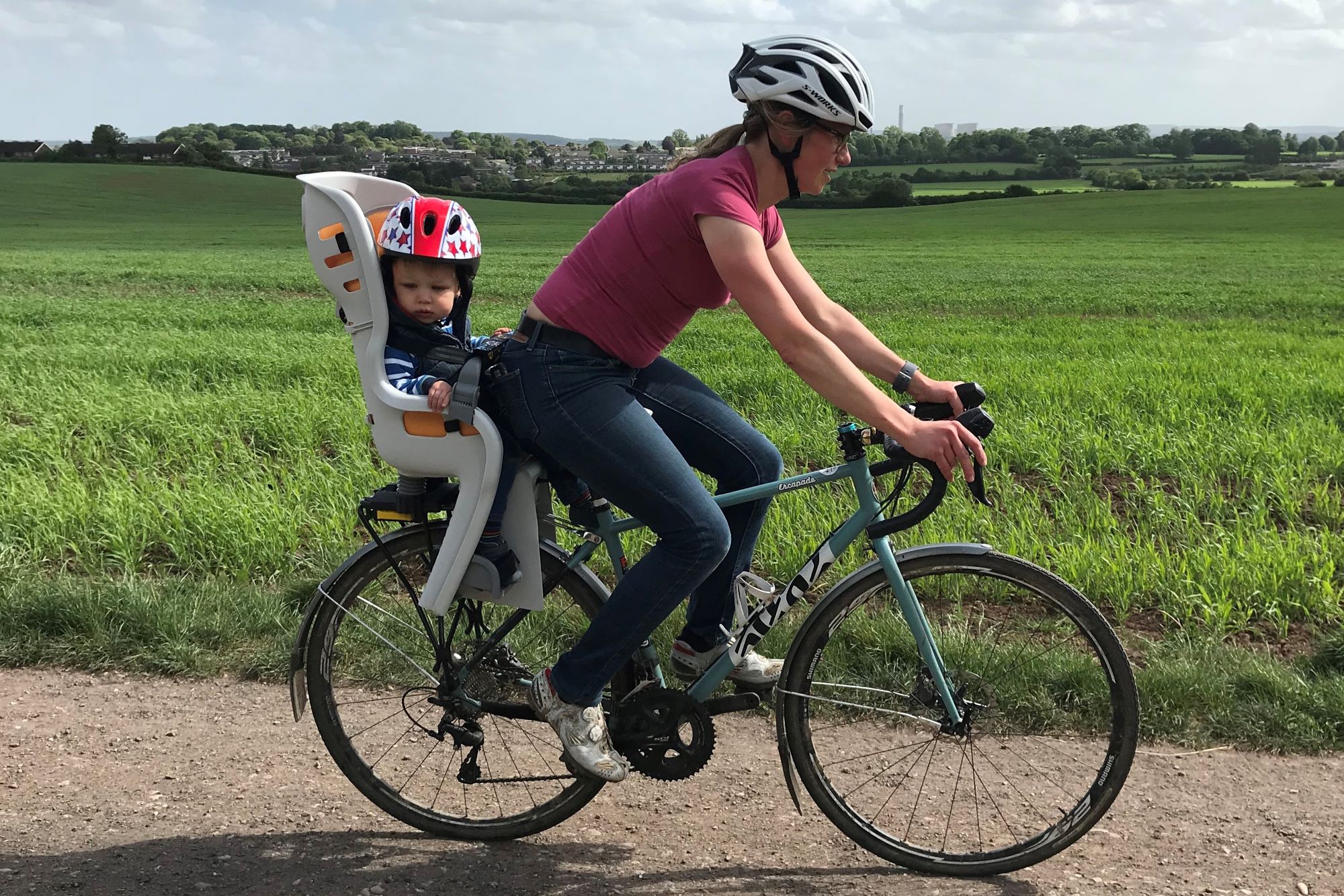
It is rare for a rack mounted seat to be so comfortable
1. Topeak Babyseat II and rack
Our expert review:
Specifications
Reasons to buy
Reasons to avoid
The Topeak Babyseat II comes with its own rack and is a really simple system to fit straight out of the box.
The seat is a moulded wraparound structure which provides some side support protecting hips, elbows and head. This is quite different from most other rear seats, which tend to be more flat and leave your child a little more exposed.
The harness features three different shoulder-height positions to accommodate your growing child, making repositioning easy and convenient.
Under the seat is a dual-spring suspension to cushion some of the lumps and bumps of the road, a feature not often found on rack-mounted seats, which lack the inherent suspension of a cantilever-mounted rack. My Son once never complained about rough roads, so it seems that this is a pretty effective design. I did notice a distinct lack of helmet rattling against the sides, which is a good sign.
On the downside, the bespoke system does mean that you need Topeak’s specific Babyseat II rack. If you already have a rack or need to swap the seat between bikes, this may seem like an unnecessary or further investment; however, this system makes the seat incredibly easy to mount and unmount, so it's a real bonus if you regularly switch between riding with and without your child.
Best budget
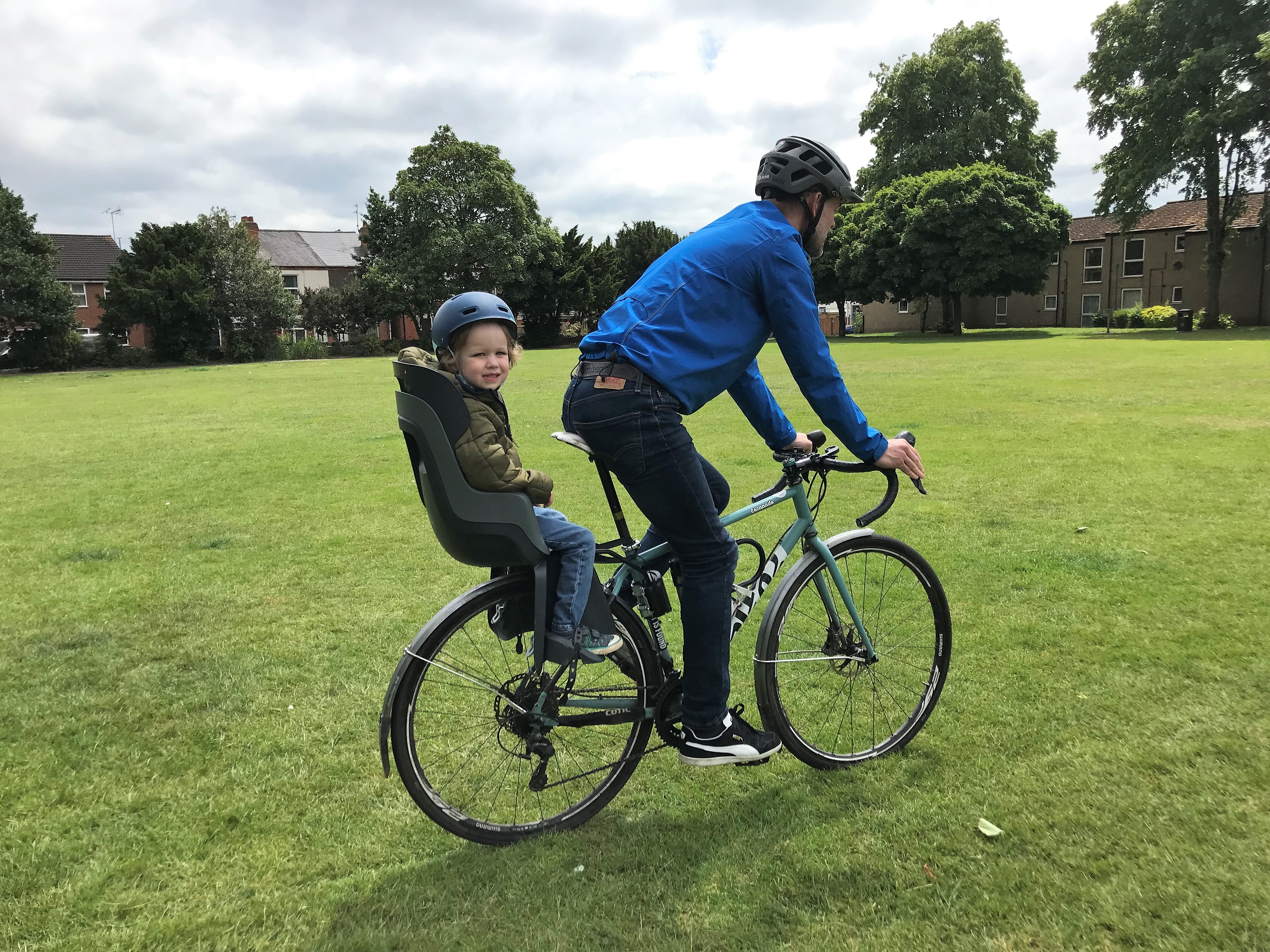
Incredible value, the Bobike manages to offer quality at prices others just can not match
2. Bobike GO Maxi
Our expert review:
Specifications
Reasons to buy
Reasons to avoid
The Dutch brand Bobike offers a range of rack- and frame-mounted rear seats to suit your budget and colour palette. I tested the entry-level GO frame-mounted seat, but it is available in a rack-mounted version.
The GO has a reassuringly solid feel, with a slight wrap-around structure that offers additional protection for your child’s head, elbows, and knees. The double-walled shell is designed to provide additional impact protection.
The seat features a basic three-point harness, which can be a bit awkward to adjust and may not allow for an even fit across your child’s shoulders. We also found we had to loosen and tighten it each time we pulled it over our son's head, even without a helmet on. Fastening the strap’s buckle is easy, but it’s pretty stiff and awkward to release. Conversely, the foot straps are the easiest and most effective to tighten and release compared to those of any other seat I tested.
The maximum child age for this seat is 6 years or a weight of 22kg. However, given our 100cm tall 3-year-old already has the shoulder straps on the highest setting, I suspect most kids will be too tall before they get too heavy or old.
Fitting the seat to the bike via the frame clamp was relatively straightforward, although the instructions were somewhat challenging to follow. The one thing we had to pay close attention to was ensuring the seat post safety strap didn’t catch in the wheel. This would be easier with Velcro or a clip rather than a slide adjuster.
Once on the road, the GO was reliable and fuss-free. It felt nice and stable with our 15kg passenger on board and certainly didn’t bounce and flex about like the Hamax Siesta. There were zero complaints from our young commuter, so I feel fairly confident in saying it makes for a comfortable ride, too.
The BoBike GO is a durable, smart, and efficient entry-level seat. Although there are some minor issues with the fitting and straps, the GO is priced at roughly half of many other seats, leaving very little to dislike.
Best for ease of use
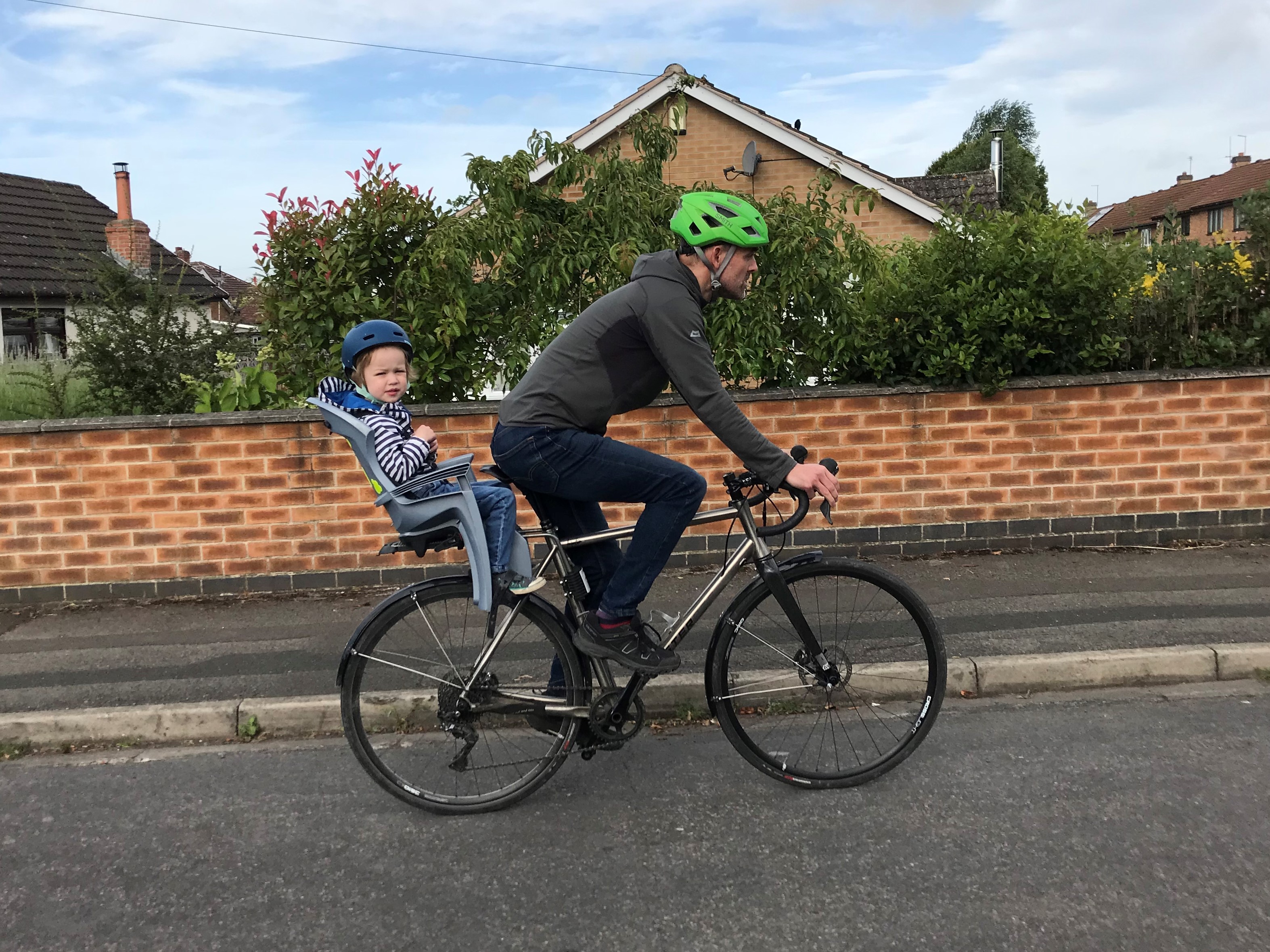
The Siesta is by far the easiest to set up of the seats I tested
3. Hamax Siesta
Our expert review:
Specifications
Reasons to buy
Reasons to avoid
The Siesta is one of Hamax’s range of six frame-mounted seats. It’s also available with three other models in a rack version.
The Siesta's construction appears understated. This is by no way a criticism, there’s nothing unnecessary on the seat that will add to the weight and everything that’s there – support, straps and buckles – does its job simply and well. There are small armrests with handles for hanging onto them and a little side protection for legs. The top of the seat is more flat-backed and open, which is good for visibility.
As the name suggests, the Siesta is designed for comfort and snoozing, with its relaxed position and adjustable recline. As with other frame-mounted seats, the majority of the comfort comes through the suspension of the mounting arms, so it’s likely that the rack-mounted version isn’t quite as plush. With my 15kg passenger aboard, there seemed to be a little too much spring in the system, which could make the bike feel unstable at times.
Having said that, of all the seats I tested, the Siesta was by far the easiest seat to adjust and fasten/unfasten, which should make it popular with parents and impatient toddlers. It uses a three-point harness with two buckles, which means you don't have to pull the harness over your child's head and helmet, making getting on and off the bike much easier. There is a fair amount of footrest adjustment, but, as with the other seats, my son, who is 100cm and 3 1/2 years old, was approaching the upper limits of the seat size. As with most rear seats, the maximum weight is 22kg and even in its most upright position, the Siesta was far more reclined than the other seats.
The Hamax Siesta provides a great deal of comfort for your child, thanks to its in-built suspension and recline function; however, this could unsettle less experienced riders. From a parent's point of view, the straps and buckles were the easiest to operate of all the seats I tested.
The best child bicycle seat - front mounted
Best for compatibility
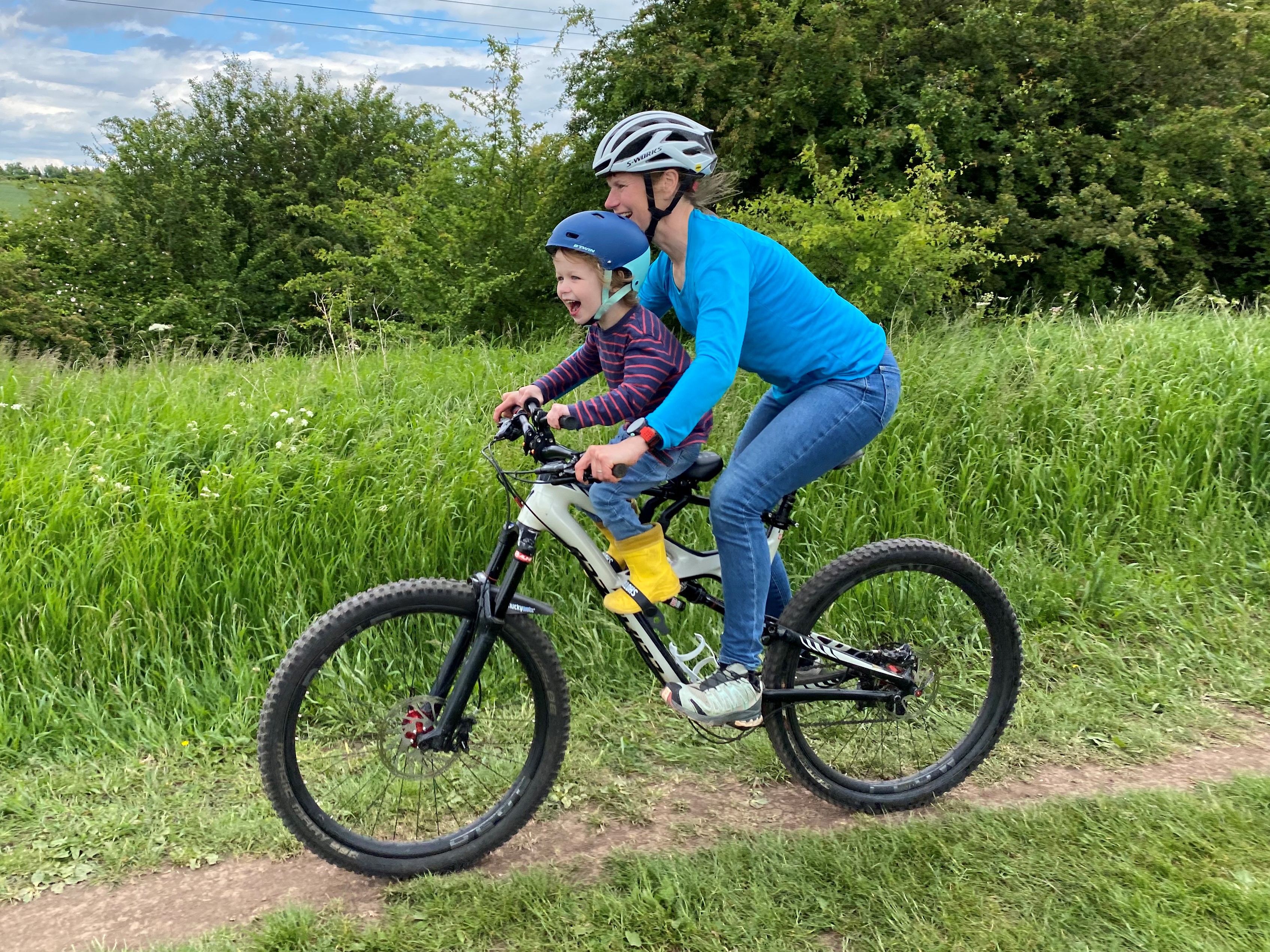
Shotgun Pro seat and bar combo
4. Kids Shotgun Pro seat and bars combo
Our expert review:
Specifications
Reasons to buy
Reasons to avoid
The Shotgun Pro is a mountain bike seat for kids aged 2-5 years old. It’s front-mounted with footrests and an optional handlebar. It fits to your bike via a bar which spans between your seat post and stem, meaning there’s no frame contact, making it suitable for carbon frames and wider e-bikes.
Similarly to the Mac Ride (see below), the stem fixing point uses a specialised spacer under your stem and quick-release clamps on both the stem and seat post. Once the spacer is in place, then fitting and removing the seat is quick and tool-free. Bonus points go to Shotgun for including the requisite tools needed for setup and a spare spacer with the seat, allowing you to set up two bikes at once.
There are a few limitations with bike compatibility - you can’t fit to a drop bar bike and need a standard stem/steerer and enough room to accommodate the clamp. This is likely to be an issue only if you ride a higher-end mountain bike or have a particularly race-oriented position.
To help us get the position right, I roughly replicated our toddler's balance bike setup. This range of adjustability is unique to the Shotgun. On the downside, it means the seat is slightly higher than the simpler Mac Ride, so your passenger’s head is more likely to obstruct your view ahead.
The whole family has absolutely loved using the Shotgun seat, and it’s been a completely different experience from any of the rear-mounted ones. I actually feel like I’m riding with my son, seeing what he sees, knowing what he’s doing and being able to react to his whoops and enjoyment. With a rear seat, I didn’t even know what he was doing, and interaction was limited to half-heard shouts between us.
Noticing his growing ability to position himself and react to riding has been so rewarding. The commute to the nursery is a lot more fun on this, too. As with the Mac Ride, your child can get in the way of seeing and pedalling a bit, but in all honesty, this has added to the fun and interaction for us both.
I would highly recommend upgrading to the Shotgun’s editional handlebar. It made all the difference for our 3-year-old. Firstly, it looks cool. This is of the utmost importance when you’re three. More prosaically, he had something he could comfortably hold onto with reassuring grips and a more natural riding position. It also gave him the chance to really interact with the riding and give him a sense of control as he could contribute to the steering.
Similarly priced to the Mac Ride, this is one of the more expensive seats available, but the value of sharing a love of riding with your child makes it worth every penny.
Best for off-road
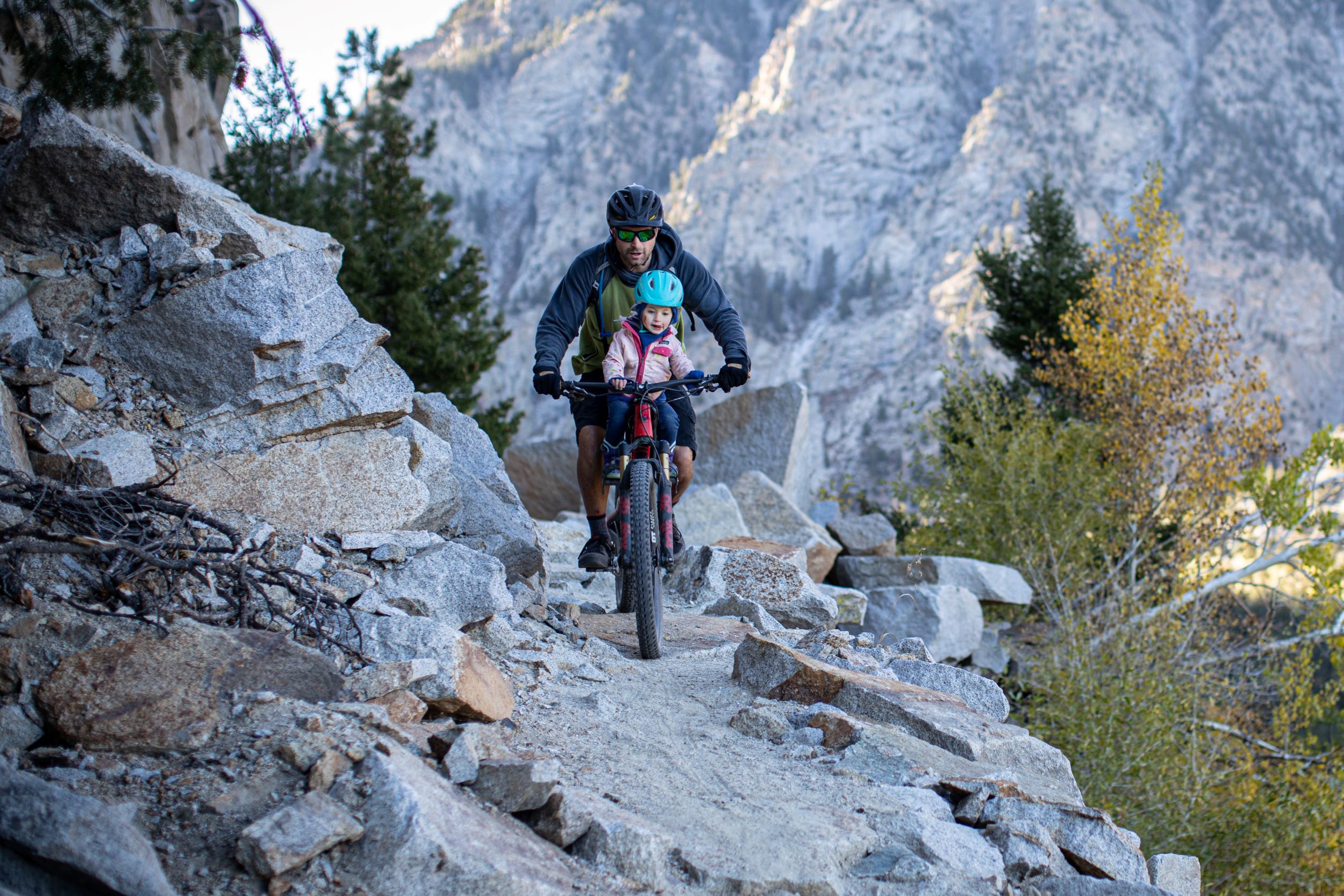
Mac Ride Child Seat
5. Mac Ride Child Bike Seat
Our expert review:
Specifications
Reasons to buy
Reasons to avoid
The Mac Ride is by far the most minimalist of all the best child bicycle seats, even when compared to the similarly comparable Shotgun, which features only a saddle and foot supports straddling the seat post and steerer tube.
Suitable for even carbon bikes, the Mac Ride is popular with mountain bikers and weighs less than 2kg, with little impact on the bike's balance, meaning it's the best child bicycle seat for technical terrain and hills.
Fitting it is a breeze, just requiring basic tools and the addition of a headset spacer, which can then be left on as it’s not noticeable. This means taking the seat on and off, or swapping between bikes only takes a couple of minutes.
There isn’t a lot of terrain that can’t be ridden on the Mac Ride. The scoop-like saddle and low-down position allow the mini shredder to be nestled and anchored in place, enabling our passenger to learn how to absorb bumps in the road or on the trail, providing a feeling as close to riding a bike as possible for your passenger.
With your passenger positioned lower down than when on the Shotgun bike seat, my riding buddy was happy to hold the bike handlebars in a natural position. It was very comfortable, as after a few years of use, covering off-road terrain for a few hours at a time, he never experienced even a hint of hand fatigue or discomfort. This low-down position also means that there is a lot of growing room; we were still using ours with a tall five-year-old, although this does eventually mean a sacrifice of rider position.
As a cycling family, we found the Mac Ride to be a fantastic child bicycle seat, revolutionising our rides, as it was only road rides with dropped bars that the seat wasn't compatible with.
We loved the closeness between rider and passenger and found every ride with it incredibly rewarding, giving our daughter a great understanding of how to take corners, position yourself on the road and even tackle flights of steps on a mountain bike.
It is one of the more expensive options on the market, but a wonderful child bicycle seat that will get a lot of use so the value is priceless.
Best top tube mounted
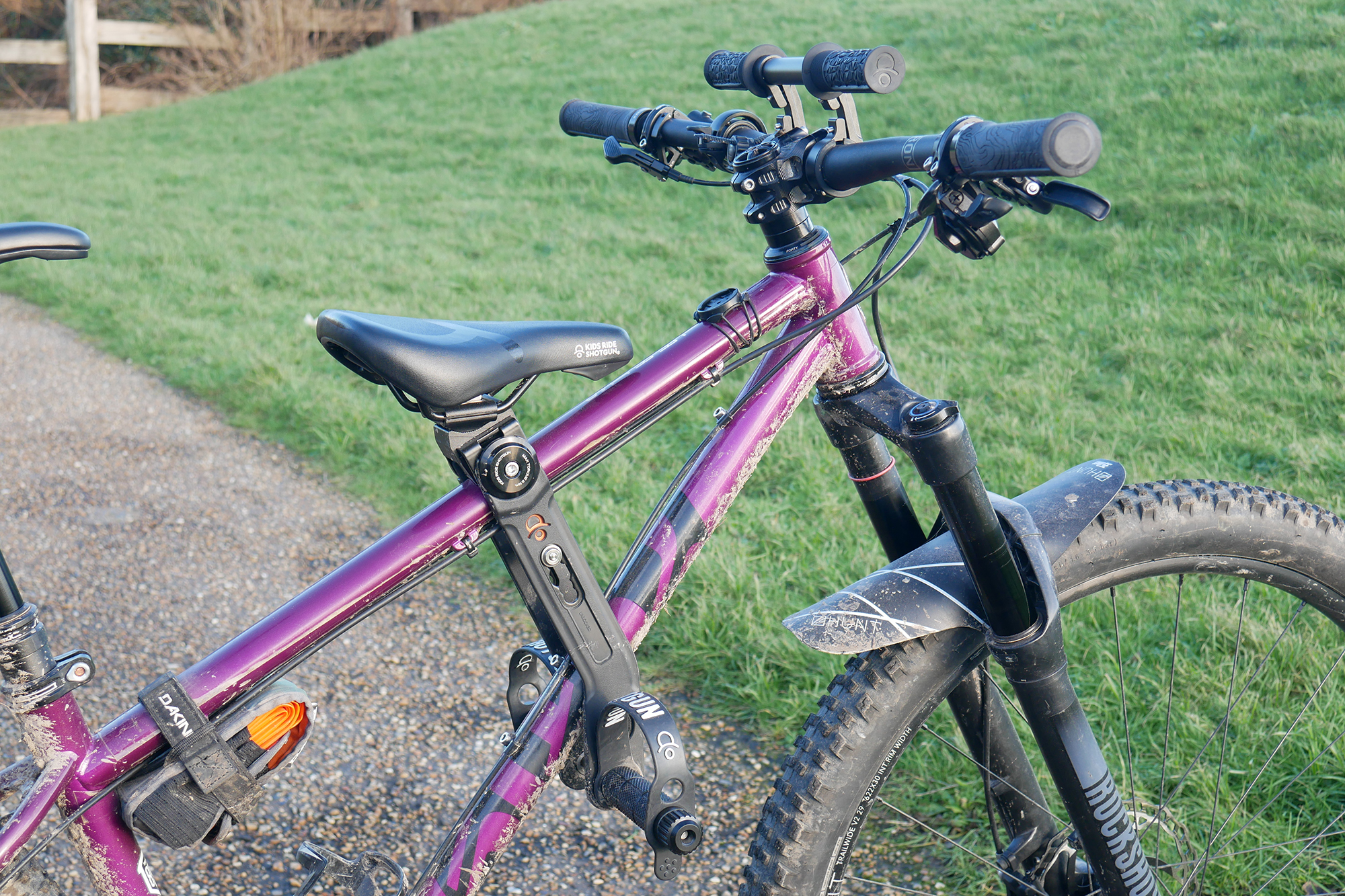
The Ride Shotgun 2.0 is simple if compatible with your bikes design
6. Kids Ride Shotgun 2.0
Our expert review:
Specifications
My son and I have been running the Kids Ride Shotgun for a little over a year now, and it has totally changed our enjoyment. Honestly, my son loves every minute of it.
Before the Shotgun seat, we had been using the rack-mounted version of the BoBike Go featured above. While we experienced no issues with it, I think he started to struggle with not being in control and seeing where he was going.
So, I took the plunge and purchased the Ride Shotgun 2.0.
The main reason for choosing this over the Pro was primarily the passenger height issue, which Rachel mentioned was a problem for her with the Pro version. With the seat mounted on the top tube, it sits a bit lower than on the rail of the Pro. I am 5 ft 7"/170 cm, and my son is tall for his age, so I knew this would be an issue. He is nearly 4, and it is just starting to become an issue, so if you are a shorter rider, I may consider the Mac Ride first.
Assembling the 2.0 is a bit fiddly, but once you have set it up, it's super quick to remove and reinstall. Swapping it between bikes isn't as easy as I'd like, but I am fortunate that I don't do this regularly, and when I do, it's to a very different bike, so maybe it's expected.
My only real issue with the Ride Shotgun 2.0 is that, while I think some of it is due to my bike's quite dramatically sloped top tube and small frame size, I have read of others having similar issues, and I am sure it's inherent in having your child in front of you. That is, if I am clipped in or try to pedal with a normal stroke, I am constantly kneeing my son in the back of the leg. It is easily countered by using the outside edge of a flat pedal or by bowing your knees out, but it's not something you can do on bigger days out. I have managed to find a middle ground by using a pretty large platform pedal and keeping his footrests in a higher position.
That said, if the 2.0 is compatible with your frame, it's a significant saving over the Pro, with very little reason to pay for the Pro unless you need to use it across multiple bikes and the other happens to not be compatible.
I highly recommend the Combo version with Ride Shotgun Handlebar, not only for stability, but it's a great place to mount a bell and a small snack pack bar bag.
How we test
One thing is for sure: many snacks are consumed during the testing of the best child bike seats.
We have many parents here at Cycling Weekly, all eager to see their kids grow up with a love for the outdoors and, ultimately, cycling, as we hope to pass on our passion for the sport to them.
The adage, 'never work with children or animals,' is never truer than when it comes to testing with kids. While feedback is sometimes difficult to understand, we find the best way to determine what works is through extensive observation and quality time spent out on the roads and trails. If there are whoops and hollers, we know we are onto a winner.
The practicalities of testing unquestionably come down to the parents. How do the seats fit? How easy or difficult are they to install? How does the weight distribution affect handling, etc? While we are all cyclists and some parents here, we are not all mechanics or expert bike handlers, which we believe provides you, the reader, with a more realistic evaluation of the best child bike seat, making it relatable to your own experience.
Quantifiable measures are challenging to obtain when testing kids' seats, but all of our testers will evaluate the seats on multiple bikes and, of course, a variety of terrain.
Reference table
| Row 0 - Cell 0 | Front | Rear cantilevered | Rear Rack |
Fixing | Steerer tube/ top tube/ seat tube/ seat post | Seat tube | On top or rear bike rack |
Suitable for | Either smaller / young children (supported seats) or older children with more strength (minimal support seats) | 9months and above | 9months and above |
Pros | Limited impact on bike handling, Closeness to child, Lightweight, Options for most bikes, Varity of support, adds extra seat capabilities, Exposure to riding skills | Range of ages (esp very young or older children), Reclining positions, Support options, Quick to remove | Capable of taking heavier weight, Less bounce, Option to extend for multiple seat platforms |
Cons | Child in wind, Lack of leg room for rider, No recline option, Difficult seeing / reaching round the child | Bike handling impacted, Heavy, Can be too flexible, Child out of sight | Bike handling impacted, Heavy, Unable to use panniers at same time, Child out of sight |
Bike / rider type limitations | Flat bar bike only. Some seats attach straight to the frame so not appropriate for carbon frames or ebikes. Smaller adult riders may struggle to use. | Not appropriate for all frame materials, not compatible with external cabling or ebikes. Weight and forces through parts of frame not designed for the purpose | Only possible to fit to bikes with rear rack mounts |
How to choose a child seat
What age can a child go in a bike seat?
Or is it size that matters most?
The exact age depends on the child and their ability to sit unaided holding their head up. Remember that ideally they will also be wearing a helmet, so that can make them a little more top heavy.
Most experts in the field of injury wouldn't recommend taking an infant younger than a year on a bicycle child seat or trailer more due to the risks associated with excess vibration / shaking and neurodevelopment than that of a crash.
There is still a huge lack of information and research around brain development and injury, so it's down to individual choice. It worth noting that in some countries and US states it's illegal for a person/ child under 16 to ride without a helmet - this will prevent very young babies being on board a bike as there won't be a helmet small enough to fit.
In some US states, notably New York, children under 1 are prohibited from being transported by bike.
The UK has no helmet or age related cycling laws.
However, whatever the law or guidance, it's vital to ensure that your choice of carrier meets the minimum safety standard for your country. In the USA it's ASTM F1625 - 00(2018) and the UK it's BS EN 14344:2004, the British Standard for “Child Seats for Cycles”. Always check for the relevant standard certification before parting with your money,
Which bike seat is the safest?
Is a front or rear child bike seat safer?
As the quick glance table above shows, there are lots and pros and cons to each of the best child bicycle seat positions. What is safer really depends of a variety of things, but mostly it's a combination of how confident you feel about riding with and how old or heavy is your child.
Below is a lot more detail on each of the bike seat mounting options, including what they do well, and don't do so well at.
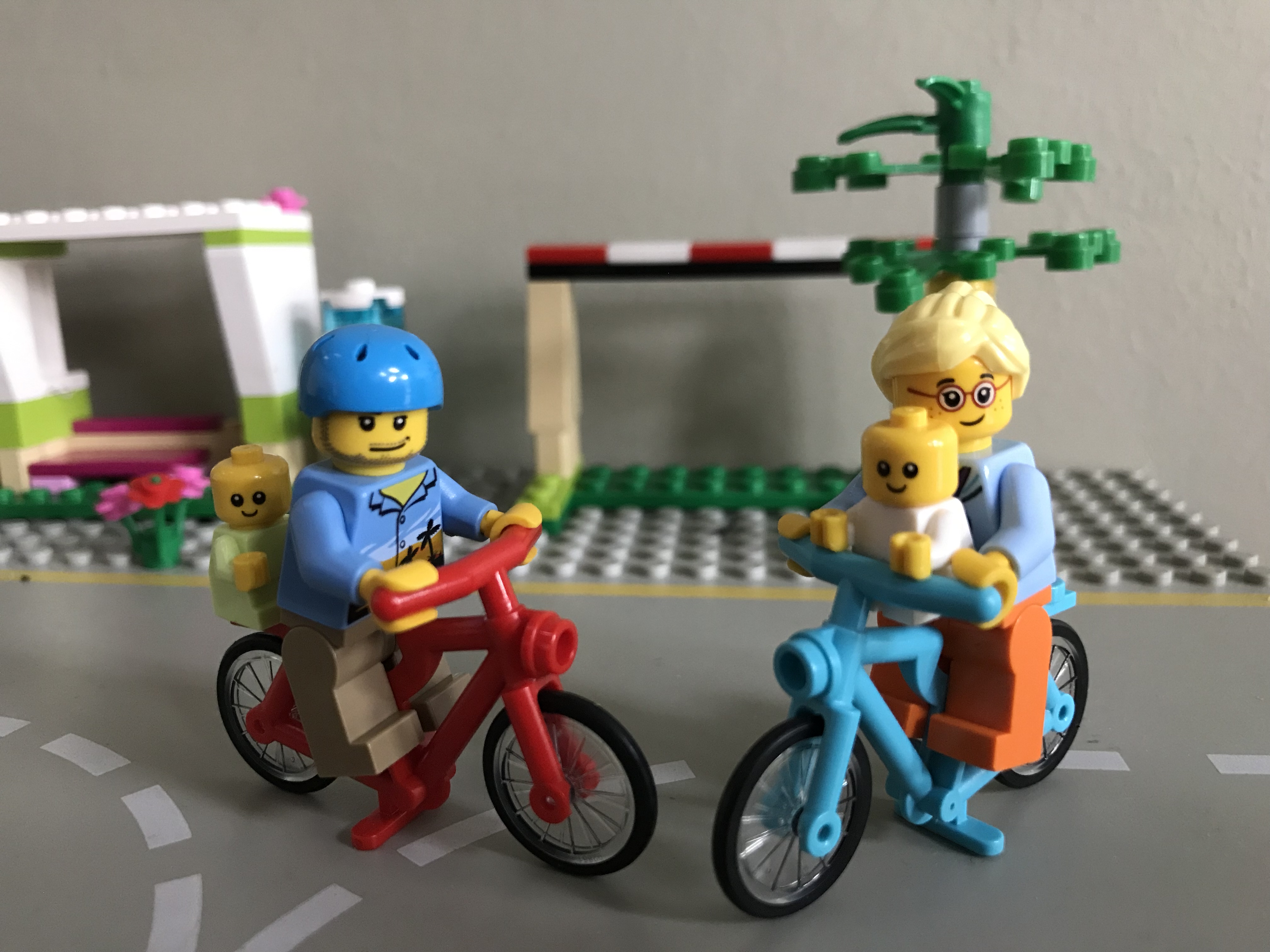
Front or rear?
Rear child bicycle seat
The most common choice for many is a rear carrying bike seat.
There are two main designs to choose from: seats that are cantilevered from the seat tube (frame mounted) or those that are mounted on to a rear rack. Rear seats come in lots of shapes and sizes - they can be minimal in design or provide good back, side and even front support. Many seats come in both frame and rack mounted versions.
The universal downside to all rear child seats is how the additional weight impacts on your bike's handling, which at best can make the bike feel extremely heavy and have a high centre of gravity at the rear of your bike. If your child is older/heavier and moves around a lot then this effect is more pronounced. It's also much harder to interact with your child when they're straight behind you.
Whilst unlike a front mounted seat you can run a rear seat on a drop bar bike this change of weight and balanced is more pronounced on this type of bike than one with flat bars.
Cantilevered rear child seat
A cantilevered bike seat uses a plastic mount clamp which sandwiches your seat tube, with two prongs from the child's seat being clipped in to position on the mount. Once the mount is attached (normally via four bolts) the child seat can often be removed by a quick release system which allows the prongs to unclip, allowing the seat to be swiftly removed.
The cantilevered child seat has the benefit of acting like a mini suspension for the child passenger, but positioning the mount is key; too high up and your centre of gravity shifts more than necessary, too low and there's a risk that the springy suspension fouls the rear wheel.
While cantilevered systems are probably the easiest to fit, not all bikes are suitable, for example if you have an external cable on your seat tube, then it won't be possible to camp the mount round. Also, not all frames will be strong enough for a cantilever system, e.g. an open frame without a top tube could suffer with significant seat post flex, and a carbon frame won't do as you'll be putting weight and forces through your frame in directions it wasn't designed for.
We also found on testing that having the clamp fitted made it hard to change the height of the saddle as the clamp squeezed the seat tube tightly onto the seat post within. This is awkward if more than one adult rider uses the same bike.
Rack mounted child bicycle seat
With a rack mounted system, the child seat slides on to the top rails of the rack and is usually anchored in place with a safety strap that attaches to the seat tube. Again this allows for swift removal of the seat when not in use, and panniers can be attached to the rack instead. Often you need a seat-specific rack so your current one may become redundant.
The great advantage of this type of seat is that the weight is taken through parts of the bike that are designed for the job.
The rack mount does mean the child is positioned lower down. If you've ever ridden with panniers you'll know it can take a while to get used to riding with this weight over your rear wheel.
Again, you need to consider if your bike can accept the child seat mounting system before investing, so check your bike rack mounting capabilities first.
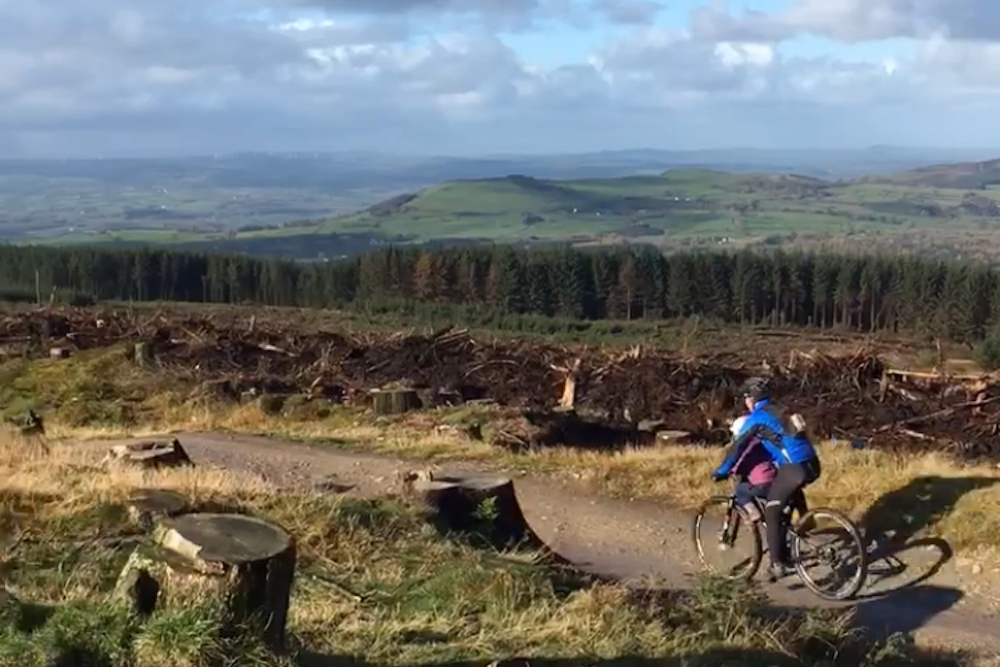
The best front child bicycle seats opens up the world to the passenger.
Front mounted seats
Having your young riding buddy up front opens up a new world for both of you, with the closeness between you and them at the top of the list. It also allows you to ride with two kids at once with one on the front and the other on the back.
There are a few mounting options, with either a cantilever off the front steerer tube or seat tube (then projecting forwards), a direct top tube mount, or a straddled bar mount which clamps to seat post and steerer tube, or a combination of the above. Most don't fit traditional road bikes as there isn't sufficient room for the bars, your hands and your passenger.
There are a variety of designs on the market which broadly divide into two. There's fully structured seats with lots of support which are great for the smaller / younger kids but room is limited for older kids. On the other end of the spectrum are more minimal setups of a saddle like the Shotgun and Mac Ride we tested.
Whatever model you opt for it's generally accepted that not only is a front child seat much lighter than a rear one, but it will have less impact on the bike's handling too (although some steer tube options will make steering heavier).
A big upside of a front child bike seat is the ability to gives your riding companion great views of the road ahead, and the opportunity to learn to read the road or trail which can help how to teach your child to ride a bike.
The down sides to front child bike seat however is the fact that your passenger is having to squeeze in to the space between you and the handlebars, which will inevitably mean having to ride with your knees slightly wider than your ideal riding position. It's also also worth bearing in mind that they will be in full face the wind, unless your chosen seat comes with a visor or you buy an after market one, so ensure you dress accordingly and invest in sunglasses/ riding goggles to protect little eyes from the wind and airborne partials. One of our small testers got caught out a few times by his parents not appreciating the degree of wind chill when he rode up front.
The latest race content, interviews, features, reviews and expert buying guides, direct to your inbox!
Hannah is Cycling Weekly’s longest-serving tech writer, having started with the magazine back in 2011. She has covered all things technical for both print and digital over multiple seasons representing CW at spring Classics, and Grand Tours and all races in between.
Hannah was a successful road and track racer herself, competing in UCI races all over Europe as well as in China, Pakistan and New Zealand.
For fun, she's ridden LEJOG unaided, a lap of Majorca in a day, won a 24-hour mountain bike race and tackled famous mountain passes in the French Alps, Pyrenees, Dolomites and Himalayas.
She lives just outside the Peak District National Park near Manchester UK with her partner, daughter and a small but beautifully formed bike collection.
- Rachel Sokal
- Matt Ischt-BarnardEcomm and Tech Writer
